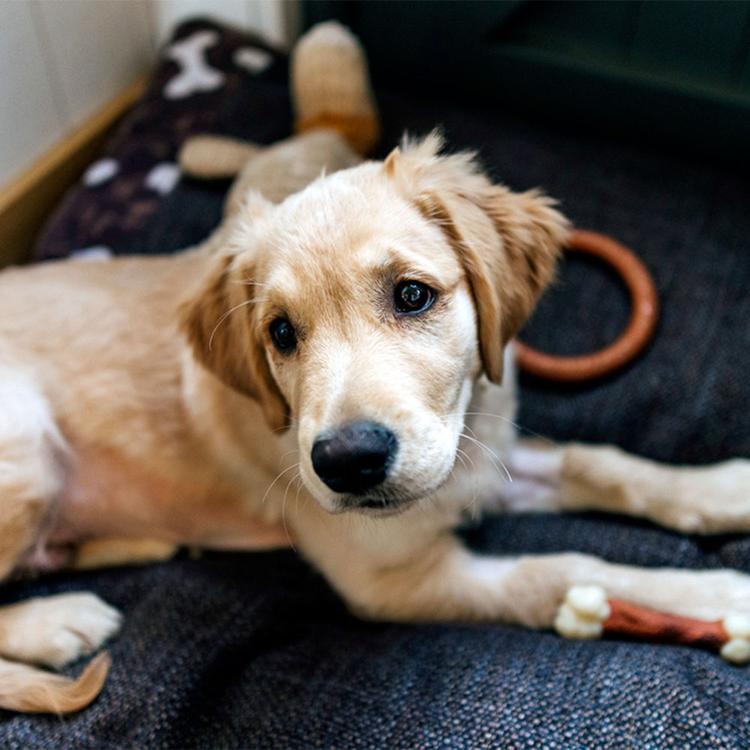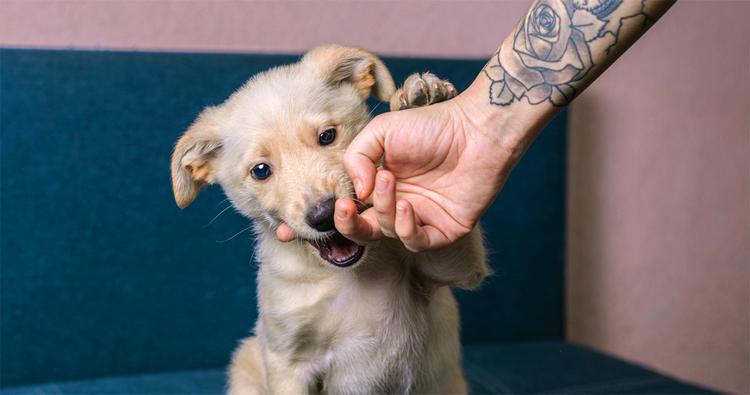How to Choose a Travel Carrier (or Crate) for Your New Dog
If you haven’t yet discovered, all dog carriers are not created equally. Our guide will help you find the right one for your pup.
If you haven’t yet discovered, all dog carriers are not created equally. Our guide will help you find the right one for your pup.
by Emily Johnson, | October 30, 2024

New Africa / Shutterstock
The day has arrived — it’s time to pick up your new pup from the shelter. Bringing a newly adopted dog home is exciting, but preparing for the ride home with them is just as important as the welcome home.
Picking the right travel dog carrier is crucial for your pup’s safety during car rides (or plane or train rides). It should be the right size for your dog and keep them safe, while meeting any specific travel requirements you may have. Let’s explore your options when choosing a travel carrier or crate for your new dog.
There are a variety of dog carriers and crates meant for travel, each with their own benefits, depending on your travel style, the destination, and your dog’s specific needs.
Soft-sided carriers are best for small dogs and short trips. They’re lightweight and easy to store, making them a great option for short car rides and in-cabin plane rides, since they can slide under the seat in front of you. These carriers don’t always provide the best security during bumpy rides, though.
Sturdier than soft-sided options, hard-shell dog carriers offer more protection for dogs, especially during longer trips. They work for air travel (both in-cabin and below the plane) and car rides, and the sturdier material can handle more jostling if you hit any bumps along the way.
As the name indicates, these carriers are backpacks with a clear ventilated outer shell for your dog to see through while being carried. They’re great for light hiking or going onto public transit with your pup, so you can keep your hands free. They work best for small dogs who are comfortable in a snugger, upright fit.
Carriers with built-in wheels are great for large dogs and long treks through airports. They’re often made with a combination of features from soft and hard carriers to keep your dog comfortable and well-contained, while remaining easy to maneuver.
Because they’re more structured and spacious than average dog carriers, travel crates are best for bigger dogs and longer trips. They offer plenty of ventilation and room to move around or lie down, so they’re great for long-term travel plans and regular road warriors.
Collapsible crates are convenient if space is limited while traveling. They’re easy to set up and break down, making them an easy choice for trips where the crate might need to be stored away when your dog isn’t using it.
Once you’ve decided on the type of carrier you want, make sure it’s the right size for your dog. Use a soft measuring tape to measure the length of your dog — from their nose to the base of their tail, and then the height from the floor to the top of their head or shoulders. Add a few extra inches to make sure they have enough room to turn around and stand comfortably.
If you don’t have a soft measuring tape, you can also use a piece of string. Mark the length and height on the string, then lay it out flat and use a ruler or regular measuring tape to measure the sections.
Requirements for dog carriers vary depending on the airlines, which type of plane you’re on, where you’re going, and how big your dog is. Be sure to consult with the airlines on which you’re flying — before your day of travel — to make sure your pup carrier works for them.
If you plan to fly with your dog in the cabin, the carrier will need to fit under the seat in front of you. This size can vary depending on the airline and model of plane you’re on. For example, Delta recommends soft-sided carriers with max measurements of 18 inches x 11 inches x 11 inches, which will fit in most of their aircrafts.
If your dog is too large to fly in the cabin, some airlines allow you to check them into the cargo space below. The airline and size of the plane will determine what kind of crate your dog will need to safely travel in cargo. For example, American has max kennel heights for their different aircraft types, along with specific requirements that include the material it’s made of, how much ventilation there is, if there are wheels, etc.
For dogs who are too large to fly in the cabin with you and aren’t allowed in cargo (or if you just prefer them to not fly in cargo), pet parents can look into private companies to ship their pets to a destination. Many of these companies don’t have breed restrictions or maximums on height and weight.
Ventilation — ample airflow on at least three sides
Comfort — soft padding or cushioning on the bottom
Ease of cleaning — removable, washable liners or materials that are easy to wipe down
Durability and quality — sturdy materials, whether hard-shelled or soft-sided, and secure latches for safety
Mobility options — wheels for easy maneuvering or low entry for senior dogs with joint issues
Traveling can be stressful enough for you and your dog. Getting them used to their carrier or travel crate or making it more comfortable for them can help ease some of their anxiety.
Add in a blanket with your scent to your dog’s carrier. You can also give them a favorite toy to carry with them or a “snuggle buddy” stuffed animal to help them feel less alone.
If you’re going on a longer trip, or your dog generally exhibits anxiety about traveling, consider talking to your vet about trying an anti-anxiety medication (like trazodone) or calming supplements to take the edge off for them.
Get your dog used to the carrier or crate long before it’s time for a trip. The last thing you want is to force your pup into a new carrier just before a multi-hour car ride.
Take the carrier out and leave it open in your living room regularly so they can investigate it on their own time. Go on short trips, like to the vet or a friend’s house, so they know being in the carrier or crate won’t last forever. You could also feed them their meals in the crate or give them treats if they go in willingly, as positive reinforcement. A slow and steady introduction is key to helping lower stress and preventing separation anxiety for your dog.
You may not be able to use a regular pet carrier for air travel. Most airlines have specific requirements for what type of crates can be used while flying. For small dogs flying in the cabin with you, the carrier must be small enough to fit under the seat in front of you. For dogs flying in the cargo hold, crates need to be durable and well-ventilated, if they are allowed at all. Check with the specific airline before your trip so you can prepare with the proper carrier.
Ideally, your dog should be able to stand, turn around, and lie down comfortably in their crate. Extra headroom is helpful but not always necessary, especially for short trips.
Introduce crate training gradually, making it a positive experience with treats and lots of praise. Keeping the door open during short introductory sessions can help your dog get used to their crate without feeling confined. Feeding meals in the crate, designating pup nap times in their crate, and taking quick trips in their crate (while slowly increasing the time spent in it) can all help your dog get more comfortable and reduce potential stressors later on during travel.
American Airlines: Checked & Carry-on Pet Checklist
Amerian Airlines: Kennel Guidelines
Dog Crates: When to Use Them and How to Pick One

Emily Johnson is a long-time pet writer and animal lover, working with brands like PetMD, Rover, Kinship, and more. She’s cared for dogs, cats, and horses her entire life and strives to help fellow pet parents through her content.

Adoption Advice

Adoption Advice

Behavior & Training

Adoption Advice
These bundles of energy can be a bit much without proper naptimes. Here’s how to put your little pup on a schedule that will keep everyone happy.

Adoption Advice
Adopting a new puppy? We've created a checklist to help you get organized before bringing your new friend home.

Adoption Advice
If your pup is shaking persistently, they could have shaking puppy syndrome. The good news: Though scary at first, an early diagnosis can greatly improve your dog’s prognosis.

Adoption Advice
The right timing can make all the difference in your puppy’s growth and behavior.

Adoption Advice
From flat collars to breakaway collars, here’s how to choose the best collar for your dog

Adoption Advice
Adopting a new puppy can shake-up the doggy dynamics at home. Here’s how to keep the peace and harmony among your pets.